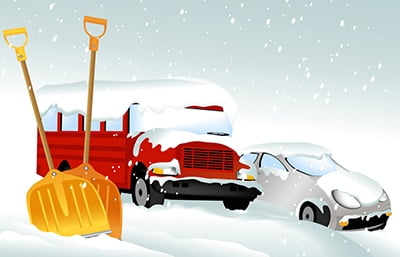Quiz: Whiteouts
ADVERTISEMENT
Correct!
Wrong!
Correct!
Wrong!
Correct!
Wrong!
Correct!
Wrong!
Share the quiz to show your results !
Subscribe to see your results
I got %%score%% of %%total%% right
More Learning Options:
Loading…
ADVERTISEMENT
Driving in Whiteout Conditions: Dos and Don’ts
For many new drivers, the thought of driving in whiteout conditions can be terrifying. Every winter, we hear accident stories that are caused by snowstorms. Even though driving through snow is normal during winter, a whiteout can significantly impact a driver’s visibility. If the weather conditions look terrible, it’s best to stay at home. However, if you must head out or if a whiteout catches you off-guard, here are the dos and don’ts of driving in whiteout conditions.
What is a Whiteout?
The definition of a whiteout is when a severe snowstorm hinders visibility. Also known as milky weather, whiteouts are known to make landmarks indistinguishable, leading to poor visibility and disorientation amongst motorists. If you are in a whiteout, you may not be able to see vehicles ahead or behind you. At times, the road even becomes unclear. In such a situation, it’s crucial to remain calm and follow the tips below.
What Should I Do When Driving in a Whiteout Condition?
 If possible, find a parking lot or a safe area slightly further from the road and wait for the weather to clear up. You should do this if your visibility is significantly impaired by snow.
If possible, find a parking lot or a safe area slightly further from the road and wait for the weather to clear up. You should do this if your visibility is significantly impaired by snow.
• In instances where you have a considerable level of visibility, drive with your fog lights turned on. Fog lights are designed to illuminate the road beneath the fog so that you can have a clear view. It can be tempting to go full-lights when driving through a snow storm. But that will only reflect the fog ahead of you, hindering visibility.
• Be calm and cautious. As a new driver, you may feel the urge to panic, but that will worsen the situation. The calmer you are, the better the decisions you will make.
• Ensure your windscreen and windows are clean so that you can see landmarks around you. Wipers and defrosters come in handy during such situations.
• Try to see as far as your eyes can.
• Drive slowly. This guarantees better control if there is an unseen vehicle ahead of you.
• Eliminate distractions in the vehicle. Ask other passengers to remain calm and alert. You may want to keep the radio on to get weather updates. But keep the volume low.
• Before heading out during winter, always pack emergency supplies. You will need blankets, a flashlight, water, and non-perishable food.
• Hold the steering wheel in the positions you learned from your driving course to ensure you have better control of the car. 9-3 and 10-2.
• Drive at a safe space from the vehicle in front. You should leave the space of about two or three cars ahead.
What Shouldn’t I Do When Driving in a Whiteout Condition?
These are things that can put you at risk. It would be best if you refrained from doing them.
- Do not stop in the middle of a road. Other motorists don’t expect to find a vehicle stopped in the middle of the road and may crash into you due to poor visibility.
• Do not switch lanes or overtake unnecessarily.
• Do not over speed. Make sure that your speed correlates with your vision limit. This helps you avoid meeting unexpected obstacles.
• Do not tailgate other motorists. Also, if a motorist is tailgating you, do not attempt to increase speed to get away from them.
• Don’t get outside your car. Use the supplies that you had packed earlier. If you must exit the vehicle, do so a couple of meters away from the road.
• Avoid using high beams. These will only worsen the visibility.
Driving in whiteout conditions isn’t as difficult as most people think. Considering that snowstorms in Canada occur twice or thrice in a year, the best solution is to familiarize yourself with the dos and don’ts of driving in a whiteout condition. During winter, motorists should pack emergency kits in their vehicles. These come in very handy when you find yourself parked on the roadside due to an extreme snowstorm. You should also stay up to date with weather and traffic reports.

 If possible, find a parking lot or a safe area slightly further from the road and wait for the weather to clear up. You should do this if your visibility is significantly impaired by snow.
If possible, find a parking lot or a safe area slightly further from the road and wait for the weather to clear up. You should do this if your visibility is significantly impaired by snow.